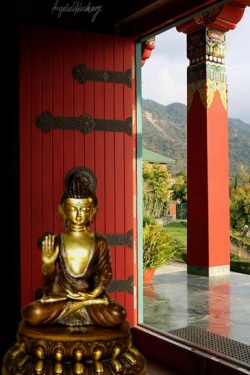Difference between revisions of "Krauncha"
(Created page with " Krauncha ;As mentioned in the {{Wiki|Puranas}}, Krauncha or the Krauncha Dwipa is the fifth of the seven dwipas or islands which makes up the world. The ...") |
|||
| Line 1: | Line 1: | ||
| − | + | [[File:935df56 n.jpg|thumb|250px|]] | |
[[Krauncha]] ;As mentioned in the {{Wiki|Puranas}}, [[Krauncha]] or the [[Krauncha Dwipa]] is the fifth of the seven [[dwipas]] or islands which makes up the [[world]]. | [[Krauncha]] ;As mentioned in the {{Wiki|Puranas}}, [[Krauncha]] or the [[Krauncha Dwipa]] is the fifth of the seven [[dwipas]] or islands which makes up the [[world]]. | ||
| − | The [[emperor]] of [[Krauncha]] was Dyutirnan. It had seven boundary [[mountains]], each in succession twice as lofty as the one preceding it. The residents of this place inhabited there without apprehension, associating with the bands of [[divinities]]. The [[Brahmans]] living there were called Pushkaras, the [[Kshatriyas]], Pushkalas and the [[Vaishyas]] were termed Dhanyas. The [[Sudras]] inhabiting in [[Krauncha]] was called Trishyas. | + | The [[emperor]] of [[Krauncha]] was [[Dyutirnan]]. It had seven boundary [[mountains]], each in succession twice as lofty as the one preceding it. The residents of this place inhabited there without apprehension, associating with the bands of [[divinities]]. The [[Brahmans]] living there were called [[Pushkaras]], the [[Kshatriyas]], [[Pushkalas]] and the [[Vaishyas]] were termed [[Dhanyas]]. The [[Sudras]] inhabiting in [[Krauncha]] was called [[Trishyas]]. |
| − | The [[Hindu]] [[mythology]] believes that the seven dwipas represent the [[earth]] and the six other {{Wiki|invisible}} companion [[worlds]]. [[Jambu Dwipa]] represents the [[earth]] and the [[Plaksha]], Salmala, [[Kusa]], [[Krauncha]], [[Saka]], and [[Pushkara]] [[symbolizes]] the six higher and {{Wiki|invisible}} globes of the {{Wiki|planetary}} chain. | + | The [[Hindu]] [[mythology]] believes that the seven [[dwipas]] represent the [[earth]] and the six other {{Wiki|invisible}} companion [[worlds]]. [[Jambu Dwipa]] represents the [[earth]] and the [[Plaksha]], Salmala, [[Kusa]], [[Krauncha]], [[Saka]], and [[Pushkara]] [[symbolizes]] the six higher and {{Wiki|invisible}} globes of the {{Wiki|planetary}} chain. |
| − | The seven dwipas together also corresponds to the geographical continents of the seven great root-races and even to the dry-land divisions of the [[earth]] during the period of one root-race. Thus [[Krauncha]] | + | The seven [[dwipas]] together also corresponds to the geographical continents of the seven great root-races and even to the dry-land divisions of the [[earth]] during the period of one root-race. Thus [[Krauncha Dwipa]] corresponds to the fifth root-race continent. |
| + | {{W}} | ||
| + | [[Category:Four continents]] | ||
Latest revision as of 12:15, 5 September 2014
Krauncha ;As mentioned in the Puranas, Krauncha or the Krauncha Dwipa is the fifth of the seven dwipas or islands which makes up the world.
The emperor of Krauncha was Dyutirnan. It had seven boundary mountains, each in succession twice as lofty as the one preceding it. The residents of this place inhabited there without apprehension, associating with the bands of divinities. The Brahmans living there were called Pushkaras, the Kshatriyas, Pushkalas and the Vaishyas were termed Dhanyas. The Sudras inhabiting in Krauncha was called Trishyas.
The Hindu mythology believes that the seven dwipas represent the earth and the six other invisible companion worlds. Jambu Dwipa represents the earth and the Plaksha, Salmala, Kusa, Krauncha, Saka, and Pushkara symbolizes the six higher and invisible globes of the planetary chain.
The seven dwipas together also corresponds to the geographical continents of the seven great root-races and even to the dry-land divisions of the earth during the period of one root-race. Thus Krauncha Dwipa corresponds to the fifth root-race continent.
